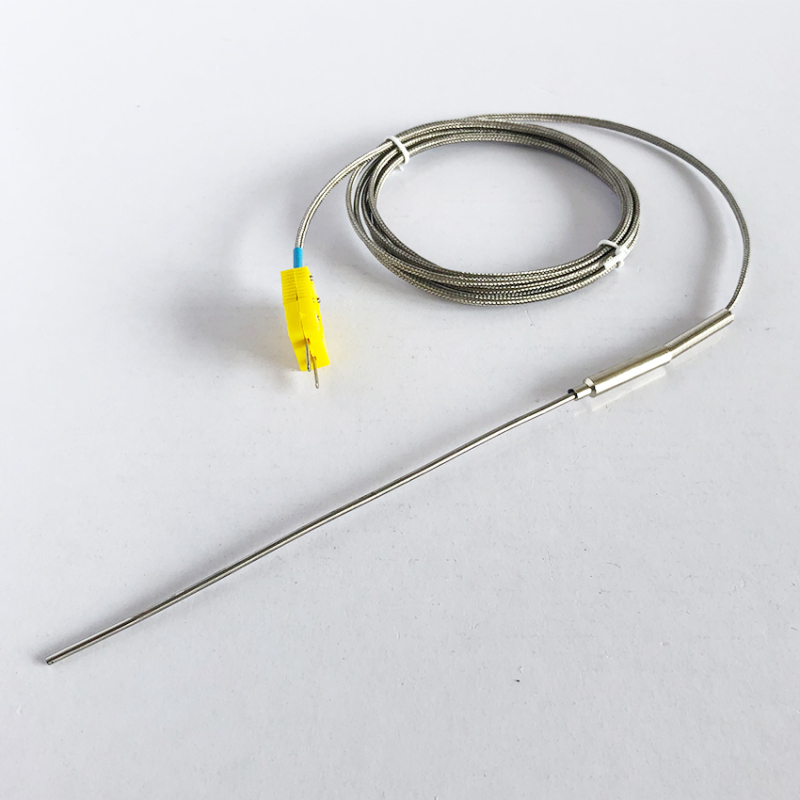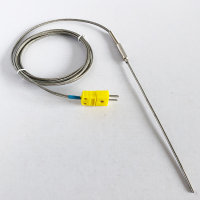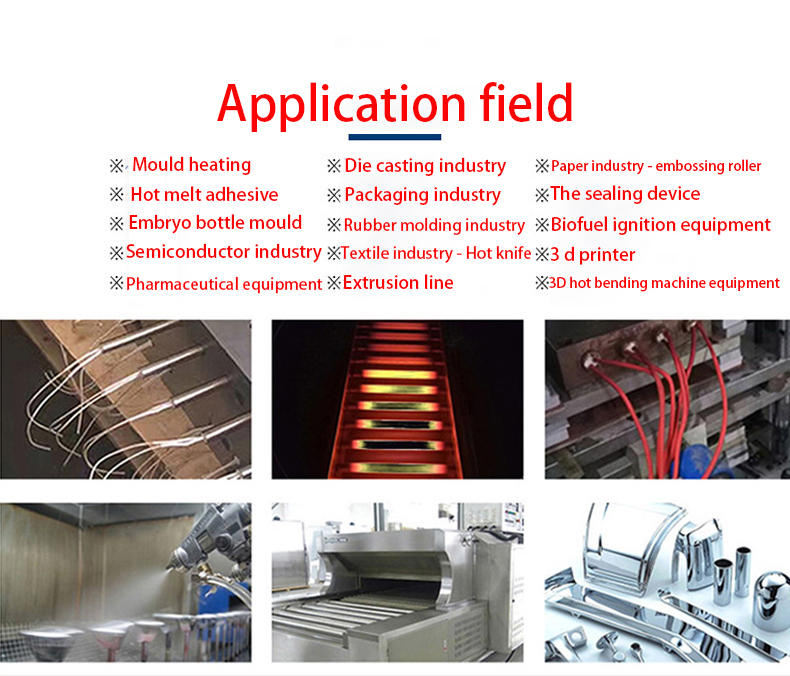
1600c Platinum Rhodium High Temperature Sensor
When two wires composed of dissimilar metals are joined at both ends and one of the ends is heated, there is a continuous current which flows in the thermoelectric circuit. If this circuit is broken at the center, the net open circuit voltage (the Seebeck voltage) is a function of the junction temperature and the composition of the two metals. Which means that when the junction of the two metals is heated, or cooled, a voltage is produced that can be correlated back to the temperature.
- SFM
- China
- 2-7 day
- Information
SHEATH MATERIAL
SUS304
SUS316 - Excellent pitting corrosion resistance & crevice corrosion resistance, widely used in the chemical industry.
Inconel600 - Heat & corrosion resistant steel with strong stress and corrosion resistance, widely used in various heating components and petrochemical industry.
MOUNTING & FIXING
A variety of mounting options including fixed or movable flange, fixed or movable thread, or without mounting fixing.
JUNCTION STYLES & DETAILS
Grounded
1. Good heat transfer from the outside to the thermocouple junction
2. Rapid response
3. No suitable in case with electrical noise
Ungrounded
1. Response time is slower than the grounded style
2. Long service life
3. Resistance to electrical noise
Exposed
1. Rapid response
2. Suitable to measure the temperature of gas
3. Poor mechanical strength in contact with other measuring structures
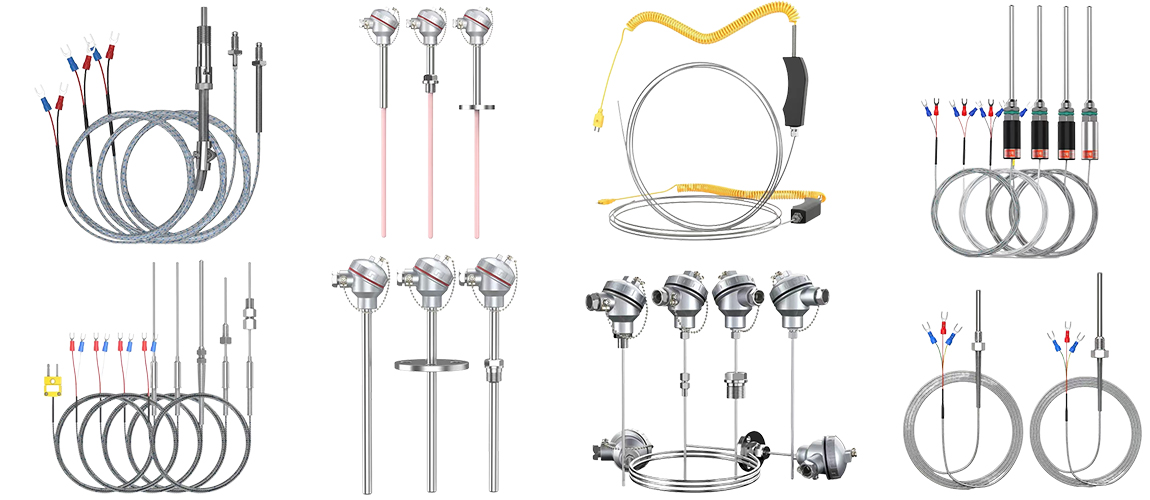
Thermocouple Types and Temperature Range
| ||||
Type | Wire Material | Temp. Range | Accuracy | |
+ | - | |||
K | Nickel-Chromium | Nickel-Alumel | -200~1000°C | +/- 2.2°C or +/- .75% |
J | Iron | Constantan | 0~600°C | +/- 2.2°C or +/- .75% |
T | Copper | Constantan | -200~300°C | +/- 1.0°C or +/- .75% |
E | Nickel-Chromium | Constantan | -200~700°C | +/- 1.7°C or +/- 0.5% |
N | Nicrosil | Nisil | -200~1200°C | +/- 2.2°C or +/- .75% |
R | Platinum Rhodium – 13% | Platinum | 0~1400°C | +/- 1.5°C or +/- .25% |
S | Platinum Rhodium – 10% | Platinum | 0~1400°C | +/- 1.5°C or +/- .25% |
B | Platinum Rhodium – 30% | Platinum Rhodium – 6% | 0~1500°C | +/- 0.5% |
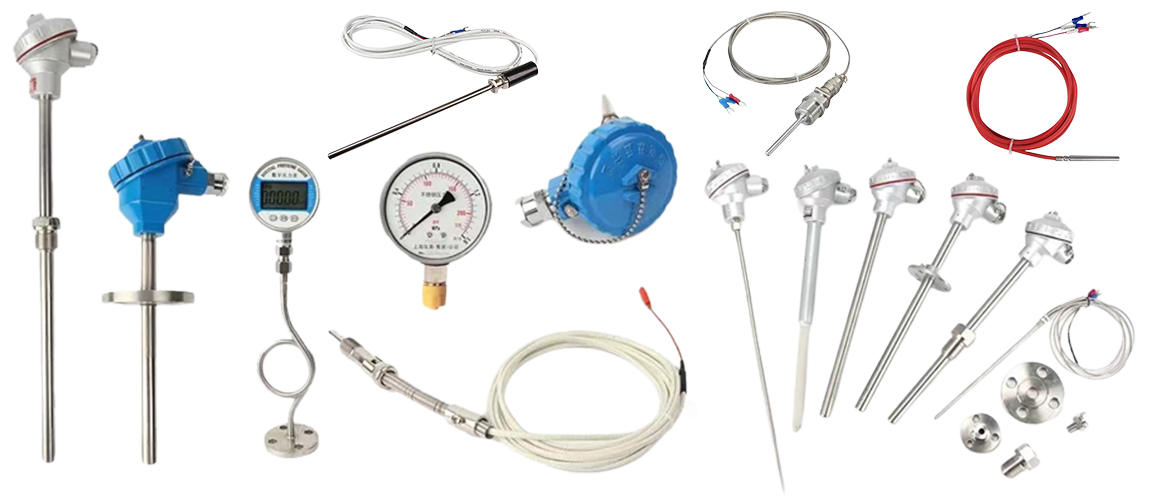
Thermocouple Type | Extension Wire Type | Wire Material | Temp. Range (℃) | Tolerance (µV) | ||
+ | - | Class 1 | Class 2 | |||
K | KX | Nickel-chrome | Nickel-silicon | -25~200 | ±60 | ±100 |
KCA | Nickel-chrome | Nickel-silicon | 0~150 | - | ±100 | |
KCB | Iron | Copper-nickel | 0~150 | - | ±100 | |
KCC | Copper | Copper-nickel | 0~100 | - | ±100 | |
E | EX | Nickel-chrome | Copper-nickel | -25~200 | ±120 | ±200 |
J | JX | Iron | Copper-nickel | -25~200 | ±85 | ±140 |
T | TX | Copper | Copper-nickel | -25~100 | ±30 | ±60 |
N | NX | Nickel-chrome | Nickel-silicon | -25~200 | ±60 | ±100 |
NC | Copper-nickel | Copper-nickel | 0~150 | - | ±100 | |
R | RCA | Copper | Copper-nickel | 0~100 | - | ±30 |
RCB | Copper | Copper-nickel | 0~200 | - | ±60 | |
B | BC | Copper | Copper | 0~100 | - | - |
S | SCA | Copper | Copper-nickel | 0~100 | - | ±30 |
SCB | Copper | Copper-nickel | 0~200 | - | ±60 | |

Features | 1. Cost effective 2. Small in size 3. Robust 4. Wide range of operation 5. Accurate for large temperature changes 6. Fast response 7. Wide temperature capabilities |
How to choose | Please provide the following information: 1. What’s the application 2. Type of the thermocouple (K/J/T/E/N/R/S/B) 3. Diameter and length of probe 4. Installation requirements (thread or flange size) 5. Temperature range 6. Chemical resistance of the thermocouple or sheath material |


